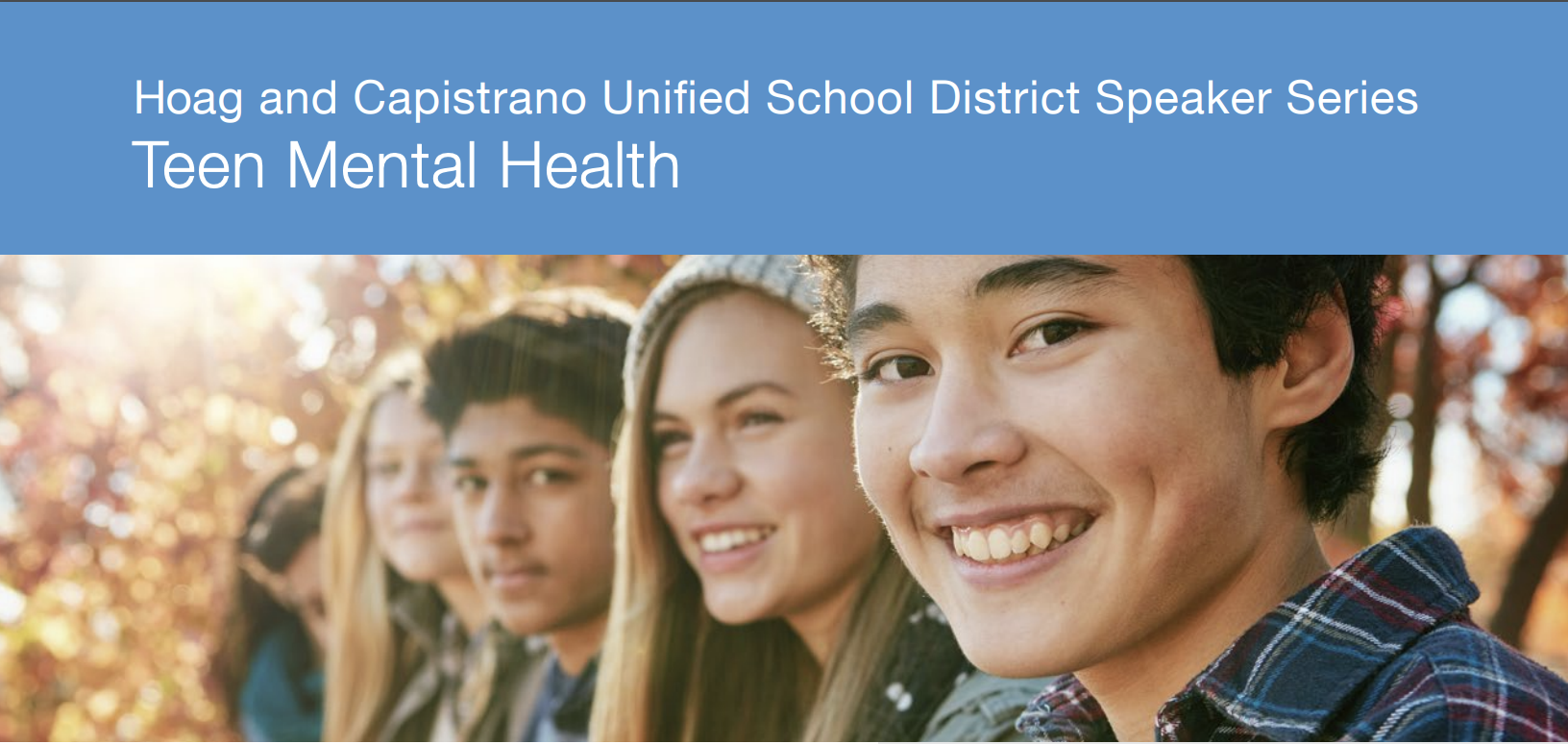By Lou Ponsi
Virtually every segment of life has been impacted by the COVID-19 pandemic, and the changes have been particularly difficult for young people, according to Hoag Hospital adolescent mental health experts.
At an Oct. 28 webinar, Hoag Hospital experts discussed strategies for parents to support children’s emotional and mental health during the pandemic. Speakers included Dr. Sina Safahieh, a child psychiatrist who oversees a Hoag Hospital program specializing in mental health treatment of adolescents; licensed marriage and family therapist April Sutherland; and licensed marriage and family therapist Celia Quinlivan.
The webinar was hosted by the Capistrano Unified School District through a partnership with Hoag’s ASPIRE program. ASPIRE is an acronym for “After School Program for Interventions and Resiliency Education.”
The webinar recording is linked below:
Instead of being taught in a classroom, students have had to adjust to virtual learning from a computer screen, Safahieh said. Socializing with friends and participating in group activities, an important aspect in the development of young lives, has dramatically diminished.
“There is no doubt that kids are behind educationally, but also socially,” Safahieh said. “Social isolation is something that is unnatural, especially for kids of all ages.”
Safahieh said COVID-19 is as much a mental health pandemic as it is a physical health pandemic.
“And its fueled by social isolation,” he said. “It’s fueled by a collapse of routines and structure, that kids, even more than adults, thrive and benefit from.”
Social media use has been on the rise during the pandemic, Safahieh said, and that can make an already difficult situation worse.
“Studies show that time and time again, every hour spent on social media correlates with an increase in depressive symptoms,” he said.
The Didi Hirsch Mental health hotline in Los Angeles, which typically receives 20 to 40 phone calls in a month, fielded 1,800 calls in March 2020, when the pandemic started.
“Depression and suicide rates had already been rising among youth,” Safahieh said. “But with COVID-19, it’s been even more amplified.”
Parents should look for signs of depression, he said.
Immediate red flags include a child becoming more isolated and withdrawn, having dark discussions and bringing up death and suicide frequently. Other signs include changes in sleep or appetite, loosing pleasure in activities they used to enjoy, decline in academic and social functioning or giving away prized possessions
“These are things that need to be monitored and taken seriously,” Safahieh said. “And the kid should be evaluated.”
Parents should also watch for signs of aggression, changes in mood or in energy level.
Youngsters may also exhibit avoidance behaviors when they are feeling overwhelmed, licensed marriage and family therapist April Sutherland said.
“Avoidance is anxiety’s best friend,” Sutherland said. “So whatever item, situation, person … whatever it is they are anxious, about, if they avoid it or if we avoid it, it really becomes a bigger, larger, scarier item. So, we encourage the parents to be OK with task reductions. It is a lot healthier to do a tiny part of something then avoid it all together. If we see avoidance happening, it is critical to nip it right away.”
Finding new and consistent routines is critical, Sutherland said.
It is important for counselors, teachers and parents to help children find a new routine that fits into the current situation because there is no telling how restrictions will be in place, she said.
But there is a bright side, Safahieh said. Current sacrifices provide a greater awareness of how good life was before and how good it will be again.
“Just the ability to go to a restaurant, just the ability to hang out with friends and whatnot, were kind of things we took for granted,” Safahieh said. “Hopefully, once 2021 comes around, vaccines come in to play and the virus itself starts to teeter out, we’re going to look back and know that we pushed through that. We endured.”
For more videos from the Hoag speaker series, visit the CUSD Insider YouTube page here.

